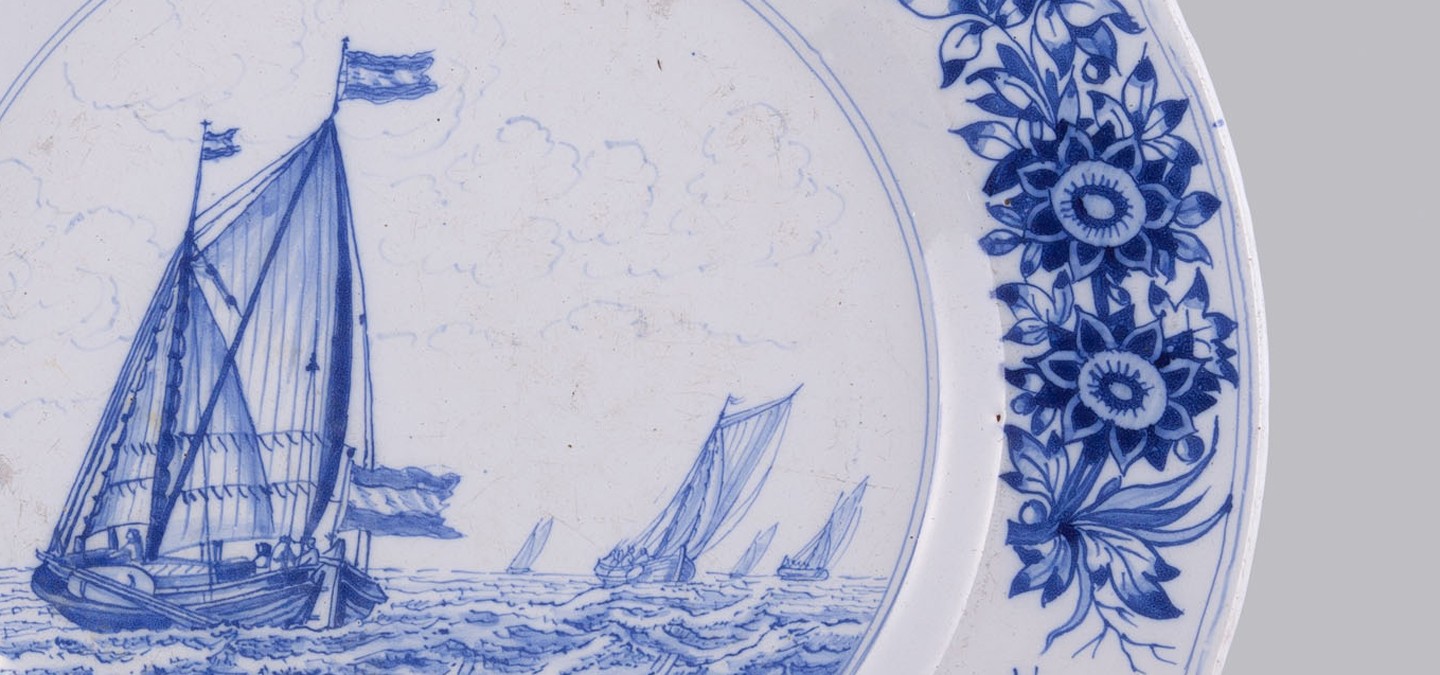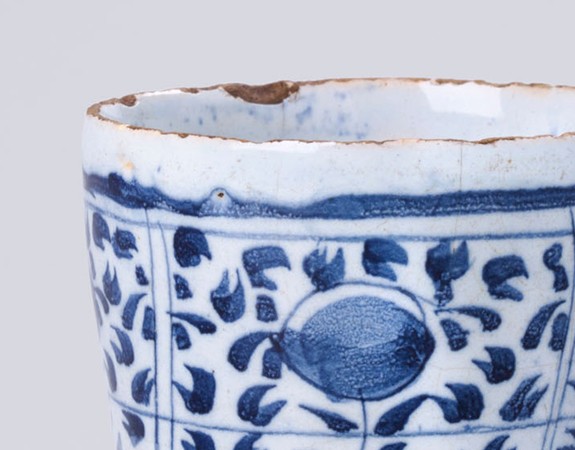
‘Delft blue’: Dutch souvenir shops are full of it. Like tulips, clogs and windmills, the blue-and-white pottery has become a symbol of the Netherlands. But the items in the shops are rarely ‘genuine’ antique Dutch delftware, which was made in a particular way, in Delft, and is often – though not always – blue and white.
Antique Dutch delftware has five key characteristics:
- It was made between roughly 1620 and 1850.
- It was made in Delft.
- It has a tin glaze.
- It sometimes has a mark.
- It is often painted blue and white.
Delftware was made between 1620 and 1850
The first ships carrying Chinese porcelain arrived in the Netherlands around 1600. The new luxury pottery was very popular, and makers in Delft soon started trying to develop a good imitation.
The Chinese porcelain was made of very fine white clay known as kaolin , but that was not available in the Netherlands. So to make ‘Hollants porceleyn’ (Dutch porcelain) the potters in Delft used tin glaze – an opaque white glaze containing tin oxide.
Potters in Delft tried to make a good imitation of porcelain
Tin glaze came to the Dutch Republic from the Middle East, via Italy and Antwerp. This technique was used in Delft until around 1850. That is why we refer to objects made between 1620 and 1850 as antique Delftware. After 1850 Delftware was made using another technique, and is known as modern Delftware.
Dutch delftware was made in Delft
Tin-glazed earthenware, or faience, was also made elsewhere in the Netherlands and Europe in its heyday, but that produced in Delft is acknowledged as the best. Dutch delftware is only referred to as such if it was actually produced in Delft. Take care, because in the late 19th century Delftware became very popular again, and manufacturers who were not based in Delft also put the word ‘Delft’ on the base of their products.
Dutch delftware can be recognised by its white glaze
Delftware was made using a clay that turned yellow when fired. It was then dipped in a bath of white, opaque tin glaze to cover it completely. The earthenware objects were fired at around 1000 degrees Celsius.
This was not enough to fuse the clay and the glaze completely, so the glaze could easily flake off. This caused slight damage, where the yellow of the clay can often be seen. This is a good way of identifying antique Delftware.
Chips in the glaze can show the yellow or red clay underneath
The same goes for small scars left by triangular pegs on the base or back. The pots were stacked in saggars in the kiln to protect them from flames and smoke during the firing process. The items were separated in the saggar using triangular pegs. These left small imprints in the glaze on the base or back of the pot. These imprints are therefore a distinctive feature of antique faience .
Dutch delftware might have a mark – but not necessarily
Dutch delftware sometimes has one or more marks on the base or back. These marks were used increasingly from the late 17th century onwards. This was good for trade: the marks were a guarantee of distinctiveness and quality, particularly abroad.
Since factories often had several owners, the marks also indicate when the object was made. However, only a few of the maker’s marks have ever been officially recorded, and at least half the antique Delftware made never had a mark. So if a piece does not have a mark, it does not necessarily mean that it is not Dutch delftware. This list includes all known Delft and non-Delft marks.
A mark guaranteed distinctiveness and quality
Dutch delftware is not always blue and white
The first items of Dutch delftware were based on imported Chinese porcelain, which was always blue and white. That is why the combination of blue and white became popular in Delft.
However, cheaper domestic items had only a tin glaze, so they are completely white. And later Delftware was sometimes painted in several colours.

















